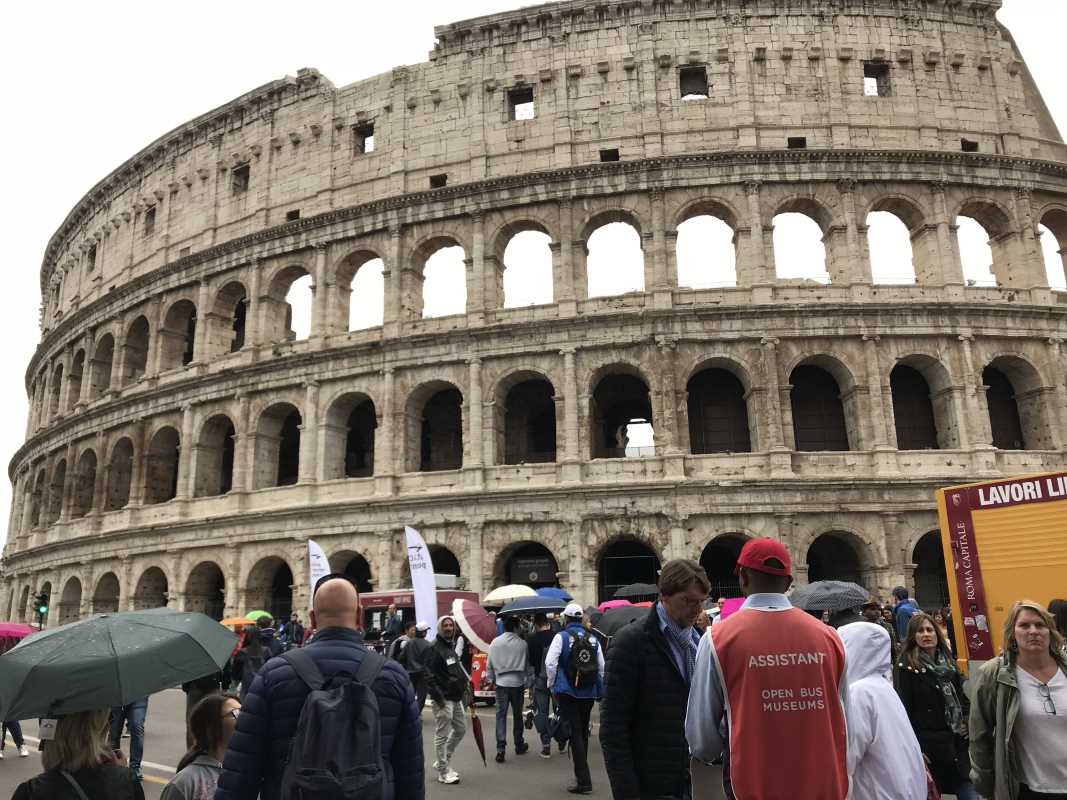Looking to add a touch of history to your next vacation? Consider exploring these five fascinating historic destinations that offer a glimpse into the past while providing unforgettable travel experiences. From ancient Rome’s gladiatorial contests to the majestic temples of the Incas, these historic sites are perfect for travelers seeking to connect with the roots of human civilization and marvel at the accomplishments of past societies. Each of these destinations represents a unique chapter in the story of humanity and offers insight into the cultural, architectural, and political achievements that have shaped our world today.
The Colosseum, Rome, Italy
No trip to Rome is complete without a visit to the iconic Colosseum. Built between 70 and 80 AD under the emperors Vespasian and Titus, this ancient amphitheater once hosted some of the most spectacular events in Roman history, including gladiatorial contests, animal hunts, and even naval battles. With a seating capacity of over 50,000 people, the Colosseum was a monumental symbol of Roman engineering prowess and served as a center for public entertainment for centuries.
Today, the Colosseum is one of the best-preserved monuments of ancient Rome, standing as a testament to the grandeur and architectural innovation of the Roman Empire. Visitors can explore the various levels of the Colosseum, including the arena floor where gladiators once fought, the underground chambers where animals and combatants were kept, and the upper tiers offering sweeping views of the Roman Forum and the city beyond.
A visit to the Colosseum also provides an opportunity to learn about the broader social and cultural significance of gladiatorial games in Roman society. These events were not just entertainment but also a means of political control, serving to demonstrate the power of the emperors while placating the masses. The Colosseum stands today not only as a symbol of Roman architectural mastery but also as a reminder of the complex relationship between entertainment, politics, and power in ancient Rome.
Machu Picchu, Peru
Perched high in the Andes Mountains of Peru, Machu Picchu is one of the most famous archaeological sites in the world and a must-see destination for history enthusiasts. Often referred to as the "Lost City of the Incas," Machu Picchu was built in the 15th century by the Inca emperor Pachacuti and was abandoned just over a century later during the Spanish Conquest. It remained hidden from the outside world until its rediscovery by American archaeologist Hiram Bingham in 1911.
Machu Picchu is a UNESCO World Heritage Site and offers a unique glimpse into the advanced engineering and architectural abilities of the Inca civilization. The site’s precise stone construction, impressive agricultural terraces, and complex water management systems are evidence of the Incas' expertise in adapting to their mountainous environment. The purpose of Machu Picchu remains a subject of debate among historians, with some suggesting it was a royal estate, while others believe it may have been a religious site.
Visitors to Machu Picchu can explore its many temples, plazas, and residences while taking in the breathtaking views of the surrounding mountains and valleys. The famous Inca Trail, a multi-day hike that culminates in a dramatic arrival at Machu Picchu, is a popular route for adventurous travelers, though for those seeking a more relaxed experience, there is also the option of taking a train from Cusco to the site. No matter how you choose to arrive, Machu Picchu offers an unforgettable journey into the heart of Inca history and a chance to witness one of the most spectacular remnants of pre-Columbian civilization.
The Great Wall of China
Stretching over 13,000 miles across northern China, the Great Wall is one of the most extraordinary feats of ancient engineering and a symbol of China's rich and enduring history. Construction of the Great Wall began as early as the 7th century BC, with various dynasties contributing to its expansion and fortification over the centuries. The wall was originally built to protect China from nomadic invasions, particularly from the Mongols, and served as both a physical barrier and a symbol of the strength and unity of the Chinese empire.
Today, several sections of the Great Wall are open to visitors, offering the chance to walk in the footsteps of ancient soldiers and experience the vastness of this incredible structure firsthand. The most popular sections of the wall, such as those near Beijing, have been restored and are easily accessible, with well-maintained paths and stunning views of the surrounding mountains. However, for those seeking a more authentic and less crowded experience, there are also more remote sections of the wall that remain in their original, weathered state, offering a deeper connection to the past.
The Great Wall is more than just a physical structure—it is a symbol of China's historical resilience and a reminder of the lengths to which ancient civilizations went to protect their people and preserve their cultures. Whether you visit the restored sections near Beijing or venture to the lesser-known parts of the wall, walking along this ancient fortification is a truly awe-inspiring experience that brings history to life in a profound way.
The Acropolis, Athens, Greece
Rising above the city of Athens, the Acropolis is one of the most important ancient sites in the world and a symbol of the intellectual and artistic achievements of ancient Greece. Dating back to the 5th century BC, the Acropolis is home to several significant buildings, the most famous of which is the Parthenon, a temple dedicated to the goddess Athena, the city's patron deity. The Parthenon is widely regarded as one of the greatest masterpieces of classical Greek architecture, with its elegant proportions and intricate sculptures showcasing the artistry and craftsmanship of the time.
A visit to the Acropolis is a journey into the heart of ancient Greek civilization, offering insight into the political, religious, and cultural life of Athens during its Golden Age. In addition to the Parthenon, visitors can explore other important structures such as the Erechtheion, with its famous Caryatid columns, and the Temple of Athena Nike. The Acropolis Museum, located at the base of the hill, is also a must-see, housing many of the artifacts and sculptures that once adorned the ancient temples.
The Acropolis offers not only a chance to admire the architectural achievements of the ancient Greeks but also a stunning panoramic view of modern Athens, providing a striking contrast between the ancient and the contemporary. Standing atop the Acropolis, it's easy to imagine the bustling city that once surrounded it, and to appreciate the lasting legacy of ancient Greece in shaping Western civilization.
Pyramids of Giza, Egypt
No list of historic destinations would be complete without mentioning the Pyramids of Giza, one of the most iconic and enduring symbols of ancient Egypt. Located just outside of Cairo, the pyramids were built as tombs for the pharaohs during the Old Kingdom period, with the Great Pyramid of Giza being the largest and most famous of the three. Constructed over 4,500 years ago, the Great Pyramid was the tallest man-made structure in the world for over 3,800 years and remains one of the Seven Wonders of the Ancient World.
The pyramids are a testament to the ingenuity and engineering skills of the ancient Egyptians, who built these massive structures without the use of modern machinery. Visitors can explore the pyramids and the nearby Sphinx, as well as the surrounding burial complexes and temples. For those interested in delving deeper into the mysteries of ancient Egypt, the nearby Egyptian Museum in Cairo offers a wealth of artifacts and information about the lives of the pharaohs, their burial practices, and the construction of the pyramids.
A visit to the Pyramids of Giza is not only an opportunity to marvel at one of the greatest architectural achievements in human history but also a chance to connect with the spiritual and cultural beliefs that motivated the ancient Egyptians to build such monumental structures. As you stand in the shadow of the Great Pyramid, you can’t help but feel a sense of awe and wonder at the accomplishments of a civilization that continues to captivate the world thousands of years later.
Embark on a journey through time by visiting these historic destinations on your next vacation. Whether you are drawn to the grandeur of ancient civilizations, the architectural wonders of the past, or the mysteries of bygone eras, these sites offer a unique blend of history, culture, and adventure for travelers of all ages. The Colosseum, Machu Picchu, the Great Wall of China, the Acropolis, and the Pyramids of Giza are not just remnants of the past—they are living testaments to the ingenuity, creativity, and resilience of humanity throughout the ages. Each destination provides an unforgettable travel experience that will leave you with a deeper appreciation of the world’s rich history and the cultures that have shaped it.
 (Image source: Inuvo / DSR)
(Image source: Inuvo / DSR) 





